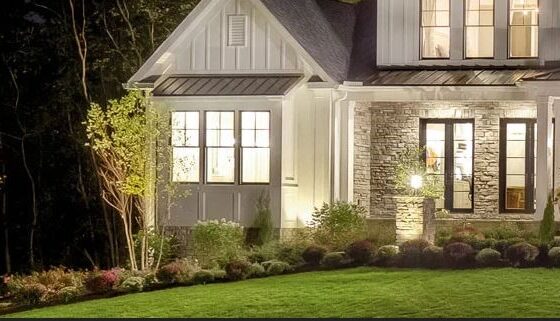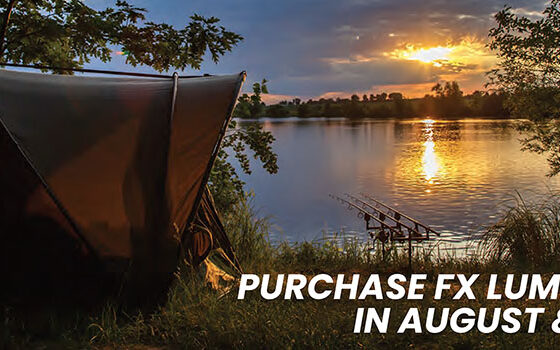Without a question, LEDs (Light Emitting Diodes) are quickly replacing incandescent lamps in the landscape lighting world. An LED is a solid state semiconductor that emits light when an electrical current is passed through it.
They have no filament so LEDs are much more robust than incandescent lamps. LEDs have been around since 1962, but powerful projection LEDs introduced in the early 2000s are a relatively recent development. This is what allowed LEDs to move from your digital watch and calculator to being a viable lighting solution.
The Benefits
There are good reasons for LEDs taking over the lighting world. For a contractor, there are many benefits: simple to design with due to a broader voltage range and lower total electrical load, require less maintenance, use of smaller transformers and thinner wire, ease of installation because LED can be connected in continuous series (“daisy chain”), etc.
For homeowners, the most tangible benefit is the reduction in their electric bills because LEDs consume about ¼ the power of incandescent lamps. Premature lamp failures due to fragility are virtually eliminated. Electrical costs are cut 40 to 80% versus incandescent installations, and the hassle and expense of lamp replacement is drastically reduced because of an LED’s long life (approximately 40,000 hours). Forty thousand hours equates to 18 years for LEDs used six hours a night year-round.
Another benefit for everyone is the fact that LED lamps and fixtures are sold with some sort of warranty whereas the vast majority of incandescent lamps have none. This speaks to the robustness and longevity of newer, high quality LEDs in the landscape lighting market. LED lamp warranties typically range from two to five years while LED integrated fixtures typically range from five to 15 years.
LED in Landscaping
There are three primary ways to use LED in landscape lighting (listed with pros and cons):
Sealed fixtures with integrated diodes
Pros: Engineered from the inside out for optimum performance since all parameters can be controlled. Full protection of electronic components and printed circuit board. Heat sinks are built in to the fixture housing to better dissipate heat away from heat-sensitive diodes. Optics are permanently and properly positioned above each diode inside the housing for best beam spread control.
Cons: Have to swap out fixture instead of internal components or lamp.
Unsealed fixtures that allow for diodes, drivers and optics to be replaced
Pros: Flexibility in being able to change fixture components in the field.
Cons: Moisture getting into housing and corroding electronics/printed circuit board. A fixture is only as good as the last person who closed it. Assumes that installer is knowledgeable about how to change, repair or replace fixture components in the field.
Replacement LED lamps
(frequently called “retrofit lamps” or “inserts”) that have a shape similar to incandescent lamps and are installed in the same manner.
Pros: Handy and flexible to be able to install lamps in any fixture.
Cons: Heat may be trapped inside fixture housing and cause premature failure of the lamp. (LEDs do not like excessive heat.) Moisture getting inside the fixture housing can damage an LED lamp. Technology is rapidly improving the thermal management options in smaller lamp-size packages.
Five years ago manufacturers had an uphill battle educating distributors and contractors alike about this new technology and convincing everyone that LED products were worth the price. Once the technology was better understood and somewhat proven, Wolf Creek staff jumped on board initially with integrated LED fixtures.
Of the three segments noted above, option one is the fastest growing with option three coming on strong due to better technology. Now contractors are seeking out this information because the technology has become main stream. The next step for us was to find a high quality, reliable retrofit lamp product line…that quest took a few more years.
Initial Concerns About LED
To be honest, Wolf Creek staff was hesitant about retrofit LED lamps because of what we had seen, heard and read. We were monitoring the U.S. Department of Energy’s CALiPER project and its blind testing reports of LED lamps…results were inconsistent and inconclusive. Too many had failed, too many had poor color rendering (CRI), warranties were shorter than the integrated LED fixtures, etc. Retrofit LED lamp quality was questionable at best.
For a number of years we flagged people off of using LED inserts, because the products that were on the market were not ready for prime time. There were three main reasons for this: price, longevity, and performance. In the summer of 2011, we finally found a manufacturer whose product we liked a great deal, and we started bringing that information to our customers. The past year has yielded some fantastic “real world” results from having first hand experience with these lamps, and everyone has been very pleased with how the lamps have performed.
Background on LED Lamp Market
Price
Until recently, the cost of an LED insert paired with a fixture was higher than an integrated LED fixture. Why pay more to end up with less performance, shorter lifespan, and a shorter warranty? Well, prices are coming down as a number of new players have entered the market. The playing field is leveling quickly.
Longevity
To be blunt, until the past 12 months the LED inserts being offered did not meet up with our expectations for quality and lifespan. The LED MR16 packaging note that always made us laugh was the one that said, “Not for exterior use and not for use in an enclosed fixture.” While that might work in an interior, tract light application, it’s impossible to accept in our landscape world.
As with all technology, market demands cause improvements and so it is with LED inserts. The lamps that have been introduced over the last year or so are miles ahead of the first generations. Better yet – they will continue to improve exponentially moving forward since all of the attention and all of the money is being channeled that direction.
Performance
Just as the world balked when Edison introduced the incandescent lamp, and it had to move away from candles and gas lights, the world is again experiencing a sea change in how it illuminates its surroundings. There were little to no standards then, and interestingly the LED industry struggles with developing standards now. It’s the wild, wild West to some degree, but eventually the industry leaders will develop the evaluative means necessary to judge LED fixtures and lamps on a more even field.
Early generation insert lamps did not match up with dedicated LED fixtures of a comparable rating. It was obvious the color rendering (CRI), color temperature (Kelvin) and lumen output was not equal simply by turning them on side-by-side.
Be advised, not every LED insert on the market right now is of sufficient quality for professional use! We have been analyzing and testing the past two years, and as mentioned above, we have found certain insert LED lamps we feel comfortable recommending. Use caution when selecting LED inserts, they are not all equal. LED inserts are expensive so you don’t want to deal with failures a year or two after installation.
Several fixture manufactures are now selling LED insert lamps with their fixtures. A few are repackaging other brands as their own while others are making, or having made, lamps to their own specifications. The new lamps are handling the longevity issues by addressing heat dissipation and moisture protection, the two killers of an LED module.
Bottom line
We no longer dissuade contractors from using LED inserts as long as they use one that is of sufficient quality. Contractors who install a lot of LED landscape lighting become very aware of the attributes of light. They never had to think about this with incandescent since it was all we knew.
If something needed adjusted we used cowls, screens, filters and lenses, but LED opens up more possibilities and with it more decisions and options. Until the latest generations of LED inserts were introduced, contractors who were early adopters of this new technology did not have much to cheer about. Even now there are still noticeable differences, but the industry is improving and truly delivering on the promise of LED.
The Color of Light
LEDs initially received a bad reputation because their output was very bluish, but it’s no longer the norm. Currently there are no “true white” LEDs manufactured. Most LEDs are blue in color. But, coating the blue LED with a yellow phosphor coating makes it produce a pleasing color of light. This typically ranges from about 2700 Kelvin to about 3100 Kelvin – the realm of incandescent to halogen.
Measuring Kelvin
The color of light is measured in “degrees Kelvin.” Twenty-seven hundred Kelvin (2700K) is a very warm, incandescent look…a faint yellowish looking light similar to a common table lamp in a house.
Three thousand Kelvin (3000K) is a brighter, crisper white similar to halogen, xenon or krypton lamps. Moving higher on the Kelvin scale, a 4000K – 4500K range will produce more of a moonlight effect. As the Kelvin scale moves up to the 8000K – 10,000K range it is very blue and not well suited to most landscape lighting needs.
,Diodes of various Kelvin temperatures can be determined during the manufacture process through “binning” (segregating diodes by Kelvin temperature). The color rendering and consistency has improved dramatically. Progress will continue at a fast and furious pace moving forward since many manufacturers have shifted their entire R&D budgets to LED light sources.
Installation
Installing a new lighting system with integrated LED fixtures remains the primary way to go. Fixtures are engineered to be more robust and, in most cases, and they carry the longest warranty. Whether contractors and property owners make a warranty claim or not, having that peace of mind with a long term warranty makes people comfortable with their investment.
The two biggest advantages to learning about and working with replacement LED lamps (“retrofits”) are:
- up-selling existing installations to “go green” and reduce the electrical bill
- renovating all of the poorly installed systems out there that suffer from severe voltage drop problems because the wiring wasn’t designed properly in the first place.
Conclusions
LED insert lamps now have a place in the professional landscape lighting world. We still recommend a dedicated LED fixture for new installations and add-ons. But, not all fixture types come in an LED version. In fact most fixture manufacturers don’t offer dedicated (integrated) LED fixtures. They simply add an insert LED lamp into their incandescent fixture. Reputable manufacturers have tested their fixtures with the LED inserts and stand behind them. So this is aiding in the growth and expansion of the LED insert market.
Fortunately, we have now reached a point that LED insert lamps have a useful and reliable role in professional lighting installations. It’s a huge step for the industry. As long as contractors pay special attention to longevity and performance selections, LED inserts, just like integrated LED fixtures, are a tremendous benefit that clearly warrants the investment.













Comments